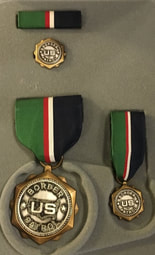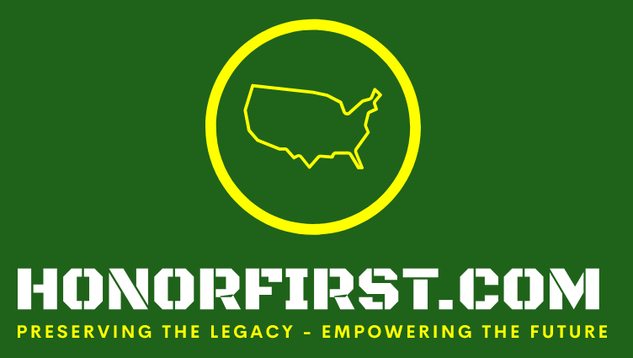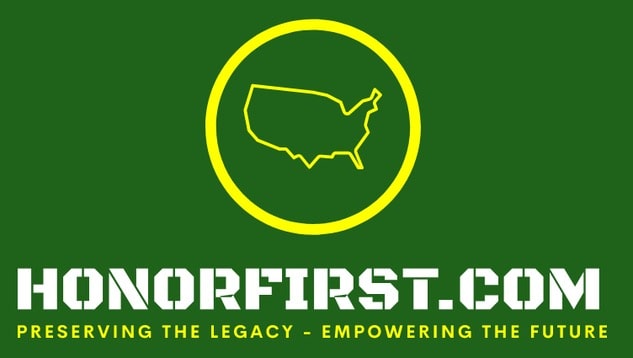October 2 - October 8 USBP Achievement Medal USBP Achievement Medal Good morning! Welcome to another This Week in USBP History! I'm going to start out by comparing the ease of purchasing military awards and insignia to the great difficulty of a current or former USBP employee obtaining an extra/replacement Border Patrol award or device... Military Insignia and Awards Would you like to purchase a Navy Seal Trident? If you wish, you can purchase one from Vanguard for $13.70. What about a Navy Cross medal? You can purchase one of those from Medals of America for $81.99. What about a Silver Star medal? Go to USA Military Medals with $40.39 and it's yours. Any military member, veteran or collector is able to purchase any military insignia and/or award, from multiple venders nearly without restriction*. *18 USC 704 regulates military medals and decorations. USBP Insignia and Awards What about active USBP employees and retirees... Where are they able to purchase replacement or extra insignia or USBP Honorary Awards? Where would someone obtain a USBP Peer Support device, BORTAC device, USBP Commendation Medal, etc...? The short answer is no USBP device or award is available for purchase by any recipient, active USBP employee, retiree or collector. What if I were to tell you I have a plan that would support the current and former workforce, collectors and the Border Patrol Museum in a win-win-win manner? A Plan of Action Here it goes - First, a CBP policy document would have to be created so that CBP/USBP would enter into official relationships with the Border Patrol Museum and Border Patrol Morale, Welfare and Recreation (BP MW&R) non-profit organizations following the model of the FBI’s relationship with the FBI Recreation Association (FBIRA).
Concerning USBP Honorary Awards and USBP Authorized Devices, it is nearly impossible for an employee or a retiree to obtain an extra set of one of their awards or devices. It would be very easy for the USBP to authorize the BP Museum to have those items manufactured for sale. It would be great for the workforce and a source of revenue for the Museum. Win / Win The approach is simple:
I recommend that USBP awards and devices be sold without restrictions, to the entire public. Let me establish some baselines on the unrestricted sale subject. All military awards are defined in law, regulation, or Executive Orders. For the military, only awards that are defined in similar documents can be worn on a military uniform. With the exception of the Medals of Honor, any person can buy and possess any military decoration. With those facts in mind, no USBP award is authorized for wear on any military uniform because our awards, although designed by the Institute of Heraldry (TIOH), are only defined in a lower-level policy signed by an SES. USBP awards are not defined in law, regulation, or Executive Orders. USBP Honorary Awards lack that level of legitimacy or bureaucratic prestige. Any person can buy and possess nearly any military decoration or device, but a USBP employee or retiree must jump through undefined hoops to get a replacement/extra medal set or authorized device. As a real-world example, a Newton-Azrak Award recipient contacted me about obtaining a medal set since he received his award before they were issued. I put him in contact with the correct USBP HQ division who promptly denied his request. On the recipient's behalf, I emailed the highest levels of Border Patrol headquarters until, almost three months later, the recipient received a Newton-Azrak Award Medal set from HQ. It should not be difficult for a recipient to receive a replacement/extra award set. A retiree should not have to persistently contact high-ranking USBP executives because a division of HQ failed to take care of the workforce or retirees. If the BP Museum received authorization to sell all USBP awards and authorized devices, it would make it easy for employees and retirees to get replacement/extra sets. If a collector wishes to purchase them, it would equate to additional revenue for the Museum. Here's an example. A USBP Achievement Medal set costs @ $15-$20 to manufacture. The Border Patrol Museum would have no problem selling them for $75. Similar profit margins could be applied to every USBP award and USBP device. Awards and devices would be available for purchase and the BP Museum would have several new streams of profitability. Win Win Win Now to the blog! This week starts with a great correction and addition in the Housekeeping section. I actually do get excited to be corrected so that I may present the best USBP history available. There are documents that pre-date the USBP, the Patrol's first job announcement, and a gunfight in El Paso and in Campo. There is a fencing estimate from 1953, and the 35th anniversary of the Patrol's newest sector. We remember three Newton-Azrak Award recipients on the anniversaries of their actions. We also remember the loss of five of our fallen, including two that fell in the same event. Friedrich Karl and John S. Blue fell due in the same incident in 1973. A sad fact is that the USBP has lost two Agents/Inspectors due to the same event nine times (18 fallen). Their names are listed below:
Daniel P. Cox and Edgardo Acosta-Feliciano both fell on July 31, 2021. However, their causes of death were not related. Enjoy the blog and have a great week! Cliff PS -
Esprit de Corps The workplace climate resulting from a combination of organizational pride and employee morale.
Esprit de corps is reinforced through the shared goals, mission and values of the organization and its employees. The definition turns Esprit de Corps into a simple formula and defines parts that comprise organizational pride and employee morale. Esprit de Corps = Organizational Pride + Employee Morale Esprit de Corps is the key to a healthy organization and engaged employees. Honor First is foundational to the Border Patrol's organizational pride and integral to its Esprit de Corps. Documents/Events 1918
Newton-Azrak Award Action Anniversaries Follow this link to see examples of USBP employees Upholding Honor First.
1991 Howard H. Gay (1945-1990) Border Patrol Pilot Marfa Sector Posthumously Awarded On October 3, 1990, while driving to work in the morning thick fog, Border Patrol Pilot Howard H. Gay noticed a stranded motorist on the highway. Realizing the danger, Mr. Gay attempted to turn around to render assistance when he was struck and killed by an on-coming vehicle. He will be remembered as a person always willing to help others in distress.
1994 Jose (Joe) L. Perez Supervisory Border Patrol Agent San Diego Sector On the night of October 3, 1994, Supervisory Border Patrol Agent Jose (Joe) L. Perez was performing his patrol duties in the Dulzura, CA area on Highway 94. Highway 94 runs east and west adjacent to the International Border between the United States and Mexico. While performing his patrol duties, Agent Perez came upon a one-car vehicle accident. Being the first law enforcement officer on the scene, Agent Perez took those steps necessary to notify the proper agencies through the Border Patrol Dispatch, and then took additional steps well above the call of duty. Agent Perez observed that there were three occupants trapped inside a vehicle that was overturned and resting on its roof. As Agent Perez approached the vehicle, he observed that the doors were jammed shut. Agent Perez used what leverage he could and managed to open one front door. Through this door, Agent Perez was able to remove the driver and the front seat passenger. He placed both of them out of the flow of traffic and returned to the car. Agent Perez then observed that the vehicle was on fire and that there was still one occupant trapped inside the vehicle. Agent Perez reentered the vehicle and doubled his efforts to free the remaining passenger. The last passenger was trapped between the collapsed roof of the vehicle and the rear seat with her legs hanging through the shattered rear window. Using brute strength, Agent Perez was able to force the seat to move sufficiently to allow him to extricate the passenger. Although the vehicle was on fire, Agent Perez took the time to ensure that any possible spinal or neck injuries were cared for before moving the passenger to a safe location. Agent Perez continued performing immediate first aid until the arrival of the paramedics and fire units. 2021 Robert S. Holmes - photo Border Patrol Agent Grand Forks, ND On October 3, 2020 at 9:00 PM, Bottineau Station Border Patrol Agent Robert Holmes assisted local law enforcement with a call regarding a suicidal man who was on top of a 144-foot structure. Beyond the call of duty while facing grave danger, Agent Holmes went to the top of the structure to search for the man. Upon reaching the top, Agent Holmes began searching the massive area which was riddled with shafts, pipes and other industrial hazards. Under the cover of night, Agent Holmes was able to locate the man, who was armed with a knife, near the edge of a grain elevator. Agent Holmes began a tactful conversation with the man and ultimately talked him into storing the knife in his pocket and moving away from the edge to safety. Agent Holmes’ actions brought great credit upon himself and the United States Border Patrol. USBP Fallen As of May 16, 2022, the U.S. Border Patrol has suffered 152* fallen. Titles:
The facts regarding each officer are presented without major editing of the "language of the day" found in the reports detailing the circumstances of each event. This is done to provide the reader an association with historical timeframes. Employees who died in the line of duty due to being exposed to deadly illnesses will not have the cause of death listed. *With the exception of two of the fallen immediately below, all names are listed (or in the process of being included) on the official Honor Roll of U.S. Border Patrol Fallen and inscribed on the National Law Enforcement Officers Memorial. The U.S. Border Patrol should fix these discrepancies. HonorFirst.com honors both of the fallen.
1973
Friedrich Karl Date of Birth: July 15, 1923 Entered on Duty: May 2, 1955 Title: Airplane Pilot End of Watch: October 4, 1973 Details: Both Airplane Pilot Friedrich Karl and his observer, Senior Patrol Agent John S. Blue, were stationed at Yuma, Arizona, when they were killed in an airplane crash. The officers were on a sign cutting and aircraft patrol assignment, having departed from the Yuma County Airport at approximately 6:00 a.m., on October 4, 1973. The flight also served to acquaint Senior Patrol Agent Blue with portions of the Yuma Sector since he had transferred there a short time before. After some five hours of flight, the officers landed at the Stoker Company Airport at Tacna, Arizona, for a rest stop and to communicate with units from the Tacna Station relative to patrol plans and operations. At approximately 12:00 noon, shortly after take-off from Tacna, the airplane struck a static line near the top of 52-foot poles of the Wellton Irrigation District power line. Contact of the landing gear with the static line caused the plane to flip, invert, and fall to the ground in an upside-down position. Both of the officers were killed instantly upon impact. Cremated John S. Blue Date of Birth: April 6, 1935 Entered on Duty: November 23, 1960 Title: Senior Patrol Agent End of Watch: October 4, 1973 Details: Senior Patrol Agent John S. Blue was stationed at Yuma, Arizona, where, while serving as an observer, he was killed in the crash of a Border Patrol airplane being flown by Airplane Pilot Friedrich Karl, also of Yuma. The officers were on a sign cutting and aircraft patrol assignment, having departed from the Yuma County Airport at approximately 6:00 a.m., on October 4, 1973. The flight also served to acquaint Senior Patrol Agent Blue with portions of the Yuma Sector since he had transferred there a short time before. After some five hours of flight, the officers landed at the Stoker Company Airport at Tacna, Arizona, for a rest stop and to communicate with units from the Tacna Station relative to patrol plans and operations. At approximately 12:00 noon, shortly after take-off from Tacna, the airplane struck a static line near the top of 52-foot poles of the Wellton Irrigation District power line. Contact of the landing gear with the static line caused the plane to flip, invert, and fall to the ground in an upside-down position. Both of the officers were killed instantly upon impact. Burial Details Unknown 2012 Nicholas J. Ivie Date of Birth October 13, 1981 Entered on Duty: January 3, 2008 Title: Border Patrol Agent End of Watch: October 2, 2012 Details: On October 2, 2012, Border Patrol Agent Nicholas J. Ivie, of the Brian A. Terry Border Patrol Station was mortally wounded in the line of duty. Agent Ivie and separate group of two Border Patrol Agents were responding to a sensor activation in a remote area near Bisbee, Arizona. Agent Ivie and one of the other Border Patrol Agents mistook the other in the darkness as an armed threat. They engaged each other, unknowingly in a friendly versus friendly gunfight. Both agents were injured by gunfire, with Agent Ivie suffering a fatal wound. Agent Ivie entered on duty as a member of the 733rd academy session on January 3, 2008. Agent Ivie was 30 years old at the time of his death and leaves behind a wife, two daughters, his parents and four siblings. Gravesite 2019 Robert M. Hotten Date of Birth: September 24, 1975 Entered on Duty: September 10, 2009 Title: Border Patrol Agent End of Watch: October 6, 2019 Details: On October 6, 2019, BPA Robert M. Hotten was investigating potential illegal cross-border activity in extremely rugged terrain near Patagonia, Arizona. After he failed to respond to radio calls, fellow agents responded to his last known location and found him unresponsive. Agent Hotten was airlifted to a hospital in Nogales, Arizona where he was later pronounced deceased. Agent Hotten entered on duty with the United States Border Patrol on September 10, 2009, as a member of the 910th session of the Border Patrol Academy. He was assigned to the Sonoita Border Patrol Station in the Tucson Sector following his graduation. Agent Hotten served with the United States Border Patrol for over 10 years. Burial Details Unknown 2021 David H. Gray Entered on Duty: March 21, 2016 Title: Enforcement Analysis Specialist End of Watch: October 8, 2021 Details: EAS Gray entered on duty on March 21, 2016. At the time of his passing, he was assigned to the Sector Intelligence Unit in Houlton Sector, Maine. Before joining the U.S. Border Patrol, EAS Grey honorably served his country for 20 years in the U.S. Navy. The circumstances of his passing were reviewed by an executive panel and the CBP Commissioner who determined that this death occurred in the line of duty. He is survived by his son, Harris; daughter, Marsilla; mother: Velva; and sister, Sandra. Gravesite
Comments
|
Clifford GillBlog author, retired U.S. Border Patrol Assistant Chief and, current U.S. Border Patrol employee advocate. Ray HarrisSite founder and owner, former Supervisory Border Patrol Agent and retired Immigration Special Agent. Joseph BancoU.S. Border Patrol historian and retired Deputy Chief Patrol Agent. Archives
July 2024
I prefer that you leave comments. However, if you wish to contact me, please do so by emailing [email protected].
|
- Home
-
For USBP Applicants
-
USBP Pages and Links
- Firearms Qualification Course
- Military Time Buy Back
- Station MWRs
- Transitioning Out of the USBP
- Fast & Furious
- U.S. Border Patrol Fallen >
- Honor First and Esprit de Corps
- USBP Photo Galleries
- U.S. Border Patrol History >
- U.S. Border Patrol Honorary Awards
- Upholding Honor First >
- U.S. Border Patrol Authorized Devices
- Border Patrol Stories
- What's Important Now - Academy Podcast
- Badges
- Veterans
- Tips for the Media
- Links
- Acronyms
- Border Patrol Locations
- Sector/Station FaceBook Pages
- Ten Codes
- Online Forums
- Search
- Home
-
For USBP Applicants
-
USBP Pages and Links
- Firearms Qualification Course
- Military Time Buy Back
- Station MWRs
- Transitioning Out of the USBP
- Fast & Furious
- U.S. Border Patrol Fallen >
- Honor First and Esprit de Corps
- USBP Photo Galleries
- U.S. Border Patrol History >
- U.S. Border Patrol Honorary Awards
- Upholding Honor First >
- U.S. Border Patrol Authorized Devices
- Border Patrol Stories
- What's Important Now - Academy Podcast
- Badges
- Veterans
- Tips for the Media
- Links
- Acronyms
- Border Patrol Locations
- Sector/Station FaceBook Pages
- Ten Codes
- Online Forums
- Search


 RSS Feed
RSS Feed
